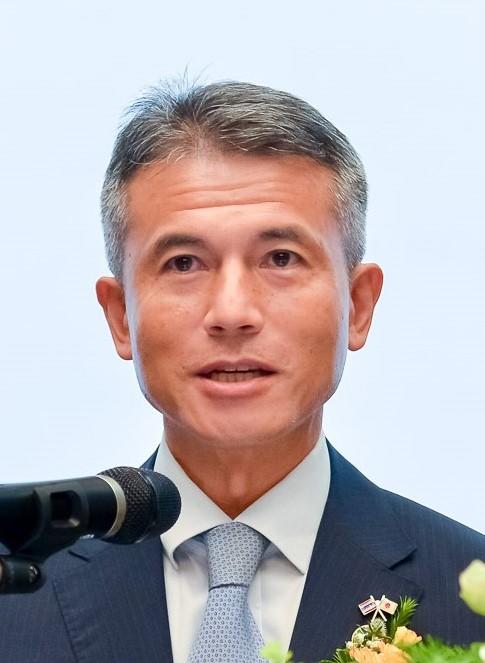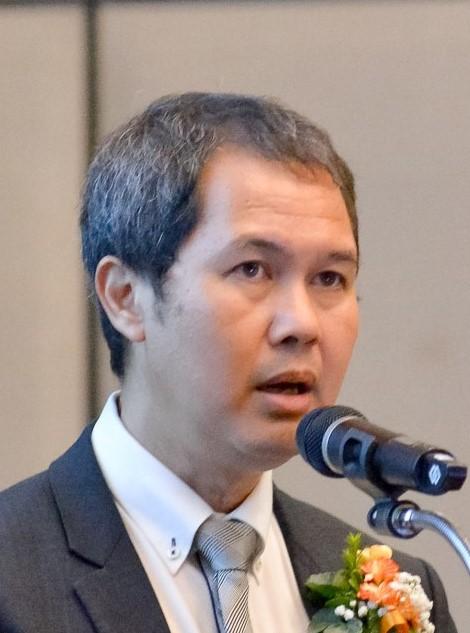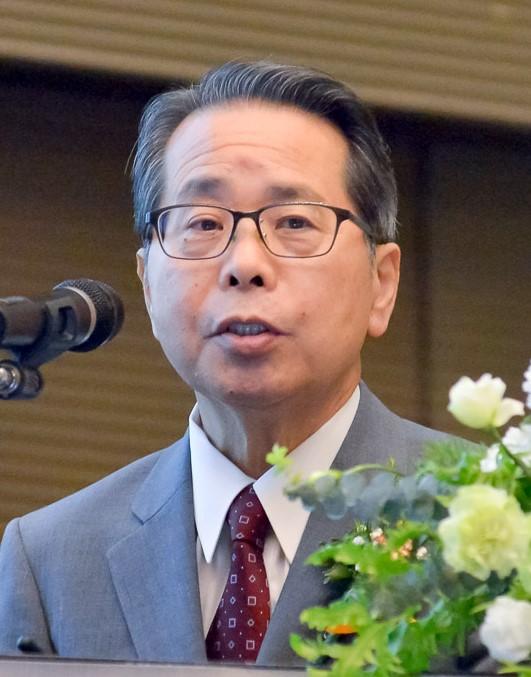JTTRI-AIRO Logistics Symposium - Part 2
Aiming for Advanced Logistics in Thailand
- Symposium etc.
- Logistics
The video has been uploaded.
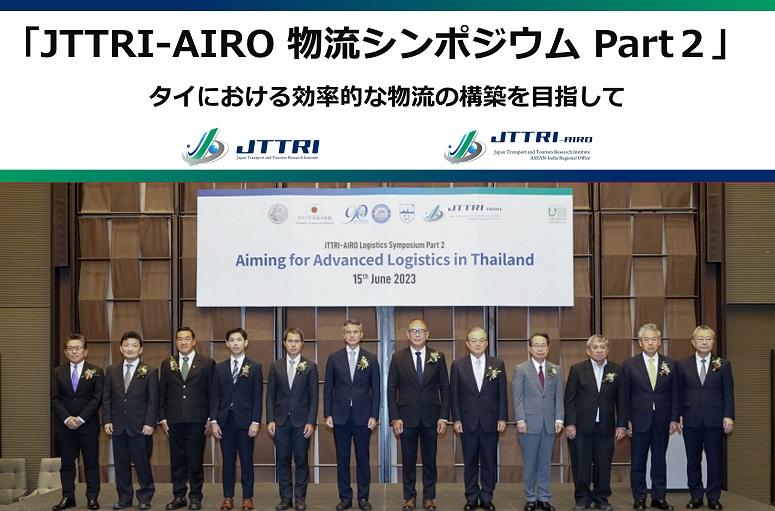

| Date / Time | Thu, Jun 15,2023 13:00-16:00 (Time Zone: ICT, UTC + 07:00) / 15:00-18:00 (JST) |
|---|---|
| Theme | Opening Remarks: SHUKURI Masafumi, Chairman, Japan Transport and Tourism Research Institute (JTTRI) Greeting from Guests of Honor: Punya CHUPANIT, Director General of OTP, Ministry of Transport OBA Yuichi, Charge d'Affaires ad interim, Embassy of Japan in Thailand JTTRI-AIRO Presentation: SAWADA Takaaki, Senior Research Fellow/ Executive Director, JTTRI-AIRO SAKAI Keichi, Research Fellow, JTTRI-AIRO Keynote Lecture: Siradol SIRIDHARA, Assitant Professor, CLARE Mahidol University Somsiri SIEWWUTTANAGUL, Lecture, CLARE Mahidol University MORI Takayuki, Professor Emeritus, University of Marketing and Distribution Sciences Panel Discussion and Q&A: <Moderator> Chackrit DUANGPRASTRA, Associate Professor, Department of Commerce, Chulalongkorn Business School, Chulalongkorn University <Panelists> Punya CHUPANIT, Director General of OTP, Ministry of Transport Bhanumas SRISUKH, Advisor to Logistics and Supply Chain Committee, Board of Trade of Thailand SHIBASAKI Ryuichi, Associate Professor, Resilience Engineering Research Center, University of Tokyo WAKE Soichiro, Executive Officer, Japan Railway Freight Company TOKONAMI Kiyoshi, Chairman of Transport Division, Japanese Chamber of Commerce, Bangkok Closing Remarks: OKUDA Tetsuya, President,JTTRI-AIRO ※Program |
Event Summary
JTTRI-AIRO has conducted research supported by a specific committee consisting of experts from government, industry, and academia from both Thailand and Japan to find solutions regarding the logistics issues in Thailand from three perspectives raised at the JTTRI-AIRO Symposium in June 2022, “improvement of efficiency of inland transportation and connectivity between transportation modes”, “utilization of ICT”, and “enhancement and strengthening of cooperation among logistics stakeholders”. In this symposium, JTTRI-AIRO will invite experts from government, industry, and academia to discuss how Thailand solves logistics issues through presentations, keynote speeches, and a panel discussion, for seeking strategies for strengthening the logistics network between neighboring countries and Japan.※Please be careful as acts such as recording may violate copyright laws.
Recording Distribution Service (Uploading period:~24/08/18)
When using this service, please read the following terms of use and use it only if you agree to them.Copyright
The copyright for the contents of this website (text, photographs, images, sound, graphics, etc.) and their arrangement and editing belongs to the creator and the Japan Transport and Tourism Research Institute(JTTRI).Unauthorized use, reprinting, modification, or commercial use of these materials is strictly prohibited.
Disclaimer
Although the Institute operates with the utmost care related to the information posted on the Recording Distribution Service, it does not guarantee the complete accuracy of the Service. The Institute shall not be liable for any trouble, loss, or damage caused by the contents posted on the service or by the use of them.Please note that the Institute may change the information posted on the service without prior notice, or may suspend or discontinue the service.
(English Version)
Program of the seminar is as the following
| Opening Remarks |
SHUKURI Masafumi, Chairman, Japan Transport and Tourism Research Institute (JTTRI)
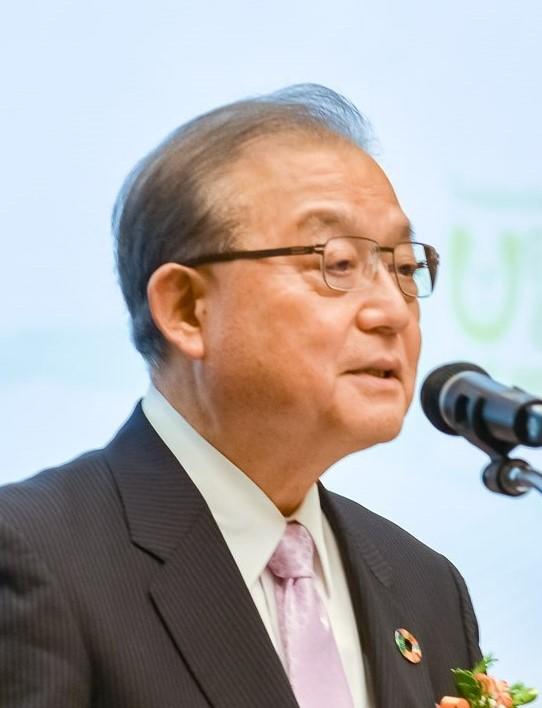 bio Opening Remarks |
|---|---|
| Greeting from Guests of Honor | |
| JTTRI-AIRO Presentation | |
| Keynote Lecture | |
| Panel Discussion and Q&A |
<Moderator>
Chackrit DUANGPRASTRA, Associate Professor, Department of Commerce, Chulalongkorn Business School, Chulalongkorn University  bio <Panelists> Punya CHUPANIT, Director General of OTP, Ministry of Transport 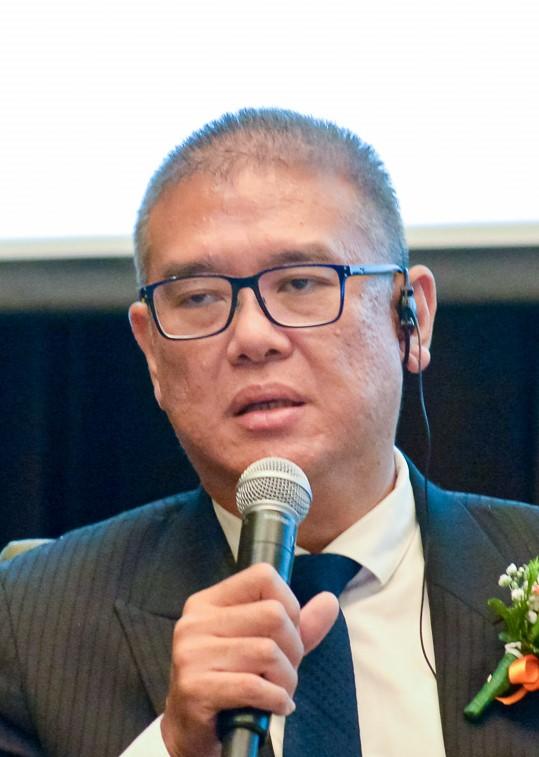 file Bhanumas SRISUKH, Advisor to Logistics and Supply Chain Committee, Board of Trade of Thailand 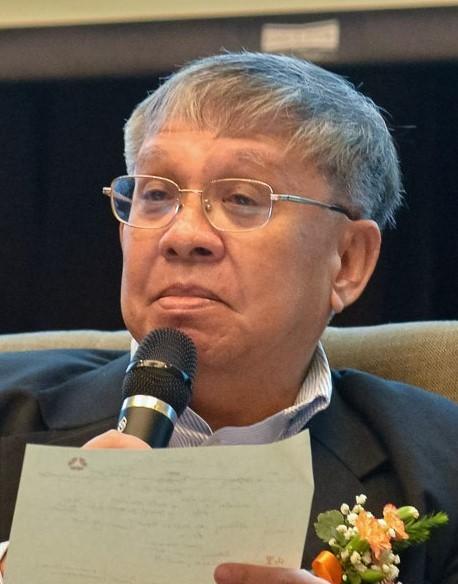 bio file SHIBASAKI Ryuichi, Associate Professor, Resilience Engineering Research Center, University of Tokyo 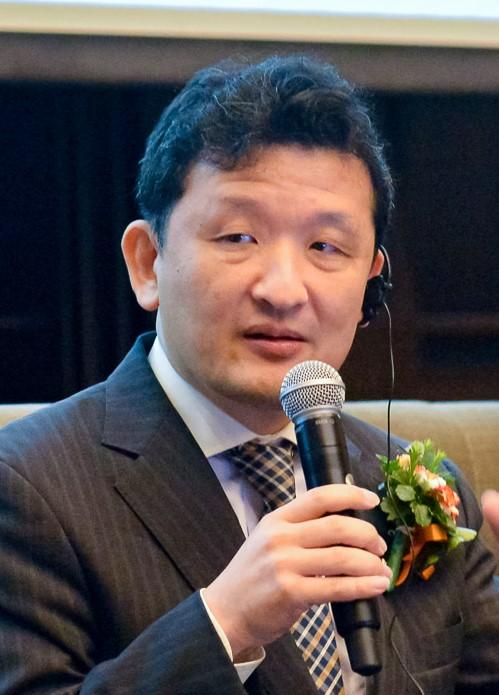 bio WAKE Soichiro, Executive Officer, Japan Railway Freight Company 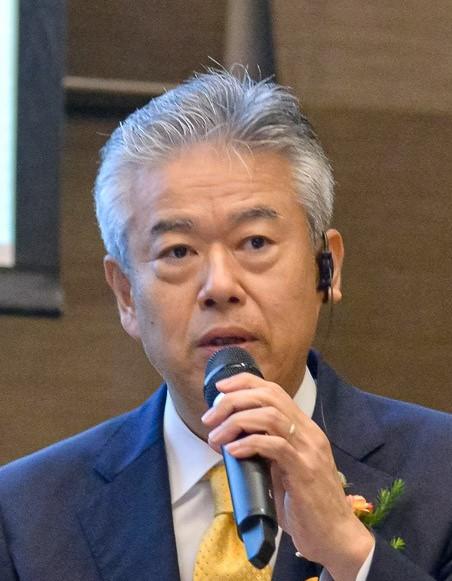 bio file TOKONAMI Kiyoshi, Chairman of Transport Division, Japanese Chamber of Commerce, Bangkok 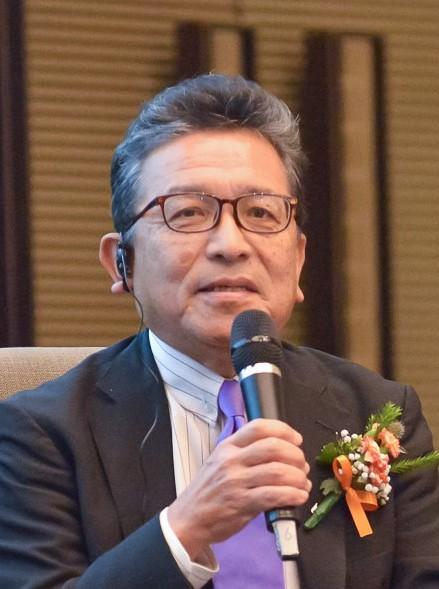 bio |
| Closing Remarks |
OKUDA Tetsuya, President,JTTRI-AIRO
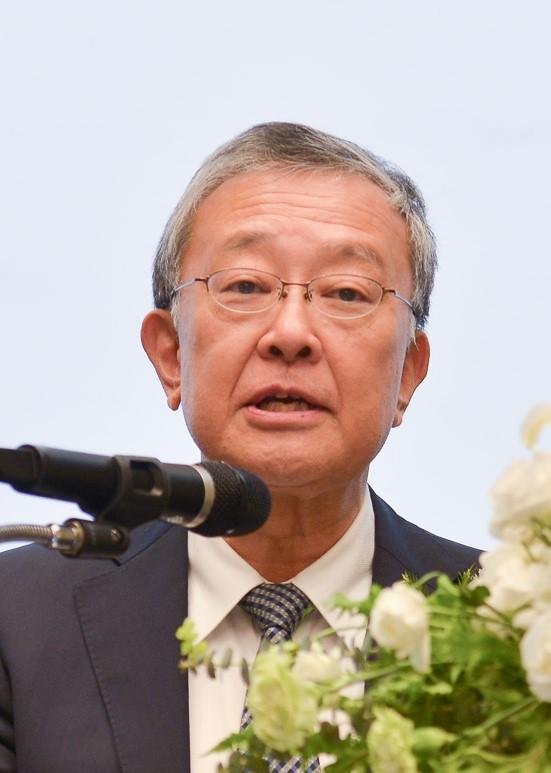 bio |
Outline of the seminar
Symposium Outcome<Purport>
Japan has a very important relationship with Thailand, which is located at the center of the ASEAN region, from the perspective of building a free and open Indo-Pacific. As JTTRI Chairman Shukuri pointed out, establishing efficient, robust and stable logistics in Japan and Thailand is an urgent task for the countries’ economic and social advancement as well as their economic security. JTTRI-AIRO set up a committee of industrial, government and academic experts from both Japan and Thailand to undertake study on Thailand’s logistics tasks identified in the Logistics Symposium Part 1, held in June 2022. The latest symposium has covered presentations of research results for streamlining inland transportation, improving connectivity between transportation modes, utilizing ICT and strengthening cooperation among logistics stakeholders. Through discussions with experts, the symposium has explored how efficient logistics can be established in Thailand, and what strategies should be adopted to reinforce logistics networks with Japan and Thailand’s neighboring countries.
<Symposium Outcome>
■Greeting from Guests of Honor
Punya Chupanit, Director General of OTP, Thai Ministry of Transport
Thailand and Japan have built strong ties in a variety of fields over many years. Japan has contributed to Thailand’s economic development through numerous investment and infrastructure development projects in the areas of environmentally-conscious logistics, ports and harbors, railroads, urban development, transport information technology, transport safety and other business areas. All of these projects are also contributing to boosting the competitive edge in transportation capacity for not only Thailand but also the rest of the ASEAN region.
The Thai Ministry of Transport focuses on stable inter-regional connections based on its master plan in offering assistance for promoting new investments, including the ASEAN Connectivity 2025, an initiative for building connection within the transport industry, as well as a program for accelerating development to build seamless connectivity. Various projects are now underway to create efficient connectivity domestically and internationally in ground, maritime and air transportation. Strengthening economic ties between Thailand and Japan and building greater trusting bilateral relations will be a significant milestone for the MoT. To this end, the Ministry has formulated the master plan, “MR-Map,” to develop a network of multi-track railroads and highways connecting production centers including the Eastern Economic Corridor (EEC). Through such plans and with close cooperation between Japan and ASEAN, the region is certain to receive expanded trade and investments from other countries.
Yuichi Oba, the Charge d’Affaires ad interim, Embassy of Japan in Thailand
Our day-to-day living and corporate production activities are sustained by maintaining the transportation of necessary goods to necessary locations at a necessary timing. For this reason, logistics represent a key social infrastructure that is essential for steady economic growth and stable public living.
Thailand faces a variety of logistics-related social issues including chronic traffic congestion, frequent traffic accidents and air pollution.
One of contributing factors is a low ratio of railway and water transportation, with truck transportation accounting for some 90% of Thailand’s logistics.
To solve logistics-related issues, we must approach them in terms of hardware and software. The development of high-quality infrastructures is therefore a key theme in initiatives in both Japan and Thailand. Here are some examples:
(1) In November last year, Japanese and Thai foreign ministers inked the “Five-Year Joint Action Plan on Japan-Thailand Strategic Economic Partnership”, defining the direction of bilateral cooperation in the economic field over five years. The Action Plan stipulates that its objective is “to develop quality infrastructures to maintain close partnership between the two countries for a variety of infrastructure projects in order to enhance connectivity of economic corridors within Thailand and between Thailand and its neighbouring countries”.
(2) Also, with its vast inland areas, Thailand must place particular emphasis on reinforcing railway transportation. Last December, Japanese and Thai transport ministers signed a memorandum of understanding on collaboration in the field of railroads. We hope to see more bilateral initiatives in the future for solving miscellaneous logistics-related issues under the MoU.
■ Research presentations
“Aiming for Advanced Logistics in Thailand”
Takaaki Sawada, Senior Research Fellow and Executive Director, JTTRI-AIRO
Keiichi Sakai, Research Fellow, JTTRI-AIRO
Tasks identified in the Logistics Symposium Part 1 in June last year were categorized into three areas for consideration.
(1)Streamlining inland transportation and improving inter-modal connectivity
① Promoting railway transportation
Railway transportation in Thailand is characterized by the cost burden of storage arising from train delay, but the introduction of double-track railroads will reduce the risks of train replacement and service delay. There is a significant risk of service delay due to heavy concentration of trains in Bangkok at the center of Thailand. However, existing lines may be used to form diversion routes, averting city congestion and boosting the punctuality of railway transportation. It is also important to promote modal shift for cargo transportation, as its demand does not fluctuate all-year round.
② Improving cargo collection systems
In Thailand, many railway cargoes are transported under a direct agreement between consignors and transportation carriers. The involvement of freight forwarders as intermediary facilitates cargo consolidation and combination of small cargoes to streamline cargo train configuration, bringing benefits to small-scale consignors.
③ Enhancing the functionality of Inland Container Depots (ICDs) and developing new ICDs on suburbs and in regional areas
It is important to add functions that enable cargo consolidation and distribution processing, and develop ICDs in regional cities and locations of logistics junctions as the hubs of cargo transportation and distribution in order to boost inland cargo transportation capacity.
(2)Use of ICT
As individual logistics operators embrace ICT, it is necessary to build an ICT platform that solves logistics issues that cannot be easily addressed by individual stakeholders alone. However, that involves high development costs and initial investments, and the issue of information sharing vs. information confidentiality. In the given situation, the service must be built and managed with government investment, and coordinated by those playing a central role in logistics. At the same time, it is also important to build a mechanism for utilizing obtained data statistically.
(3)Enhancing and reinforcing collaboration among logistics stakeholders
Collaboration of stakeholders in transportation and distribution takes the forms of (a) consolidated transportation by logistics operators and consignors, (b) joint transportation / distribution among logistics operators, and (c) cargo transportation through partnership between logistics operators and non-logistics businesses. (a) and (b) can reduce the cost of transportation by increasing cargo loads and reducing the number of times truck transportation is conducted, while (c) is a suggested initiative of small-lot cargo transportation for regional and depopulated communities requiring maintaining the means of cargo transportation.
When it comes to HR development, corporate effort alone (self help) is insufficient. It should be complemented by industry-wide “mutual help” and “public help” involving government assistance for such initiatives.
Based on the above, the following solutions are recommended to address tasks surrounding logistics in Thailand, broken down by the three themes:
〇 Streamlining inland transportation and improving inter-modal connectivity
・Continued development of infrastructures including double railway tracks, appropriate maintenance systems and cargo-handling equipment at railway stations, ports and harbors
・Review of cargo-collection approach in arterial railway transportation
・Expansion and functional reinforcement of existing ICDs in Bangkok and around EECs, and development of ICDs in regional areas
〇 Using ICT in the field of logistics
・Development and expansion of an information platform linking multiple logistics stakeholders at logistics hubs including ports, harbors and warehouses
・Use of accumulated Big Data in compiling statistics
〇 Facilitating collaboration among logistics stakeholders
・Development of consolidated and/or joint transportation and distribution systems with assistance from the government and logistics-related organizations, and promotion of understanding among consignors
・Cooperation for HR development by logistics operators and related organizations with funding from the government
■ Keynote lectures
(1)“The Situation of Railway Transportation in Thailand and its Prospective Role in Future Inland Transportation”
Siradol Siridhara, Associate Professor, CLARE Mahidol University
Thailand has two important policies with regard to railway transportation systems.
① National Economic and Social Development Plan
This is a plan compiled and announced by the National Economic and Social Development Council last year with the aim of establishing Thailand as the gateway to regional trade and investments, and a key strategic hub for regional logistic activities.
Thailand is located at the geographic center of this region. In terms of inland transportation, Thailand handles a large volume of trade, investments and cross-border transportation, which should be taken advantage of for economic development. The government is focusing on increasing the ratio of railway transportation as a key future strategy, as railroads are low-cost and low-emission in long-distance transportation of large-weight cargoes. To this end, the government plans to expand the railway network across the nation for streamlined passenger and cargo transportation. In addition to domestic regional transport, railway is to be used to connect Thailand with surrounding countries including China, Laos, Vietnam and Malaysia. Yet, some issues remain, including the underdevelopment of facilities such as container yards and dry ports.
② Transport Infrastructure Development Strategy
This is Thailand’s development plan over 20 years 2037, featuring two strategies concerning railway transportation systems. Firstly, the government plans to raise the ratio of railway transportation to 10% from the current 1.4% by increasing ground transfer and cross-border activities. Secondly, the government is promoting projects such as the development of new railway lines and multi-track railroads to establish a comprehensive transportation network. One of the government’s final goals is to reduce transportation sector’s greenhouse gas emissions. This is why the government is particularly promoting technologies such as EV. An increase in railway system investments will grow the railway industry, which will, in turn, help expand the market of railway-related facilities into neighboring countries and achieve in-house production for some of such supplies.
However, these plans are not free of issues. The first issue is the very low ratio of railway transportation due to the dominance of truck-based road transportation. The government must cooperate with many private-sector operators in order to achieve its target of bringing the ratio to 10%. Another issue is the high cost of logistics per GDP in Thailand, currently sitting at 13 – 14%. This cost must be reduced through expanding logistics networks and building logistics facilities.
Somsiri Siewwuttanagul, Lecturer, CLARE Mahidol University
With regard to the progress of high-speed rail (HSR) development under the government’s master plan, Phase 1 was due to be completed in 2021 but has suffered some delay. Phase 2 involves developing railway networks on the outskirts of Bangkok, and the final phase will connect the networks to southern and easter regions.
Thailand has 77 provinces, and 49 of them are serviced with railroads. If everything goes as planned, the number will increase to 61.
What should be noted about these plans is the enhanced robustness of infrastructures and the improved capacity of goods transportation through the introduction of high-speed rails, which is progressing in stages. To overcome the issue of different track gauges between Thailand and Laos, a gauge-changing yard has been built in the Vientiane Logistics Park. Furthermore, amidst rapid advancement of public transport in line with the master plan, Yellow and Pink lines are expected to open this year. Examples of IC use include train-tracking and freight management system. They control cargo transportation and HSR to promote the construction of trucking stations and the development of communities in the vicinity of public transport stations.
(2)“Measures to improve logistics efficiency in Thailand”
Takayuki Mori, Professor Emeritus, University of Marketing and Distribution Sciences
Thailand’s logistics are characterized by three factors. The nation’s cost of logistics against GDP is 13.8%, relatively higher than figures in Japan, the United States and Europe. Another factor is a very high cost of storage. While there is no specific data, past experiences and studies have blamed the concentration of logistics to Bangkok. The third factor is a very high level of reliance on trucking in domestic transportation, accounting for almost 90%. In Japan, trucking tops 90% in terms of tonnage, but railway and maritime transportation is the mainstream for long-distance movement of cargoes when distance is taken into account. In contrast, in the case of Thailand, trucking still exceeds 90% even on the basis of tonnage, making it the main transportation mode for long-distance cargo movements. Thailand’s local topography means expectations are low for maritime and river system transportation. A modal shift to railway is required, considering future truck driver shortage and environmental factors including the need to reduce CO2 emission.
Railway facilities must be enhanced in order to resolve these issues. This hardware development must be complimented with software development through the use of ICT. Currently, individual companies use different systems. It would be a good idea for our industry to share single platform or standardized system to facilitate joint logistics. This can be applied to address environmental factors and driver shortages. Yet, attention must be paid to anti-monopoly laws when it comes to joint logistics. In this sense, government lobbying is required for legal preparation.
The distribution of logistics sites is also important. Over half of commercial markets in Thailand are concentrated in Bangkok, extending lead-time. Regional cities must receive goods from Bangkok and therefore need to have large inventory, causing the increase of the cost of storage. The distribution of logistics sites could contribute to reducing the cost of logistics as a whole.
Additionally, current lack of logistics-related data in Thailand has hampered accurate analysis. The government and private enterprises are urged to compile statistical data to enable accurate current analysis and formulation of countermeasures concerning logistics.
■ Panel discussion
Themes: “Streamlining Thailand’s logistics” and “strengths and weaknesses of Thailand’s logistics”
Led by the moderator, panelists presented their comments on “streamlining Thailand’s logistics” and “strengths and weaknesses of Thailand’s logistics” from their respective standpoints as government officials, academic experts and private-sector business operators to exchange opinions and engage in discussions on the current status and future tasks of Thailand’s logistics.
◎ Panelists’ comments
Theme: Streamlining Thailand’s logistics
Punya Chupanit, Director General of OTP, Thai Ministry of Transport
Thailand’s transportation mode is definitely shifting from road to railway. The Ministry of Transport is currently dealing with the introduction of double-track railroads as a priority task. Adopting the double-track system has numerous benefits, and would increase the rate of on-time delivery. On-time cargo delivery is crucial for all businesses and logistics operators. In addition, it is also necessary to develop areas for reloading cargoes from road to railway transportation. This plan is already underway. The use of IT is expected to improve convenience, e.g. a system that accurately identifies the status of cargo loading.
Another important task is to increase the number of train services. Thailand’s national railway appears to be imposing conditions that consequently limit the number of services. Yet, existing train lines have sufficient capacity to accommodate increased services. We are considering utilizing train lines developed by the Ministry to have private enterprises operate train services. This could boost efficiency to the maximum extent.
Ryuichi Shibasaki, Associate Professor, Resilience Engineering Research Center, University of Tokyo
Thailand’s national land extends narrowly from north to south, with the northern half largely being inland areas. Greater railway development is needed for the northern inland areas to mitigate disadvantages in logistics.
Japan and Vietnam share the geographical characteristic, but have extensive coastlines, resulting in a substantial ratio of maritime transportation. There are not many countries that share Thailand’s geographical characteristics, leaving the nation with no role model to follow. Policies must be formulated to fully reflect this national characteristic.
In terms of areas in which Japan can provide cooperation, we can lobby the Thai government to implement policies, introduce private-sector HR development systems, provide ways of compiling statistics, offer know-how in statistical studies and research and facilitate other forms of grass-root networking.
Bhanumas Srisukh, Advisor to Logistics and Supply Chain Committee, Board of Trade of Thailand
In railroads, the State Railway of Thailand handles railway operations, track construction and administration, thereby leaving little room for competition. Allowing multiple private-sector operators into the market will generate competition, which, in turn boost transportation efficiency and reduce costs to achieve further increase in cargo volume. Legal regulations should be transformed and enforced in fairness and determination.
Kiyoshi Tokonami, Chairman of Transport Division, Japanese Chamber of Commerce, Bangkok
From a shipping operator’s perspective, the profit margin for railway transportation between the Laem Chabang Terminal and the Lat Krabang ICD should be increased. Yet, without a reasonably substantial cargo volume, in reality, it is difficult to switch from trucking to railway transportation. Strengthening the partnership between shipping companies and freight forwarders might hold the key to achieving growth in railway transportation. There is not enough capacity in cargo handover from trains to port facilities. In the future, Thailand should promote a shift to railway also from the environmental perspective.
Soichiro Wake, Executive Officer, Japan Railway Freight Company
JR Freight has worked on boosting public awareness of railway transportation in order to expand railway-based cargo transportation. It is important to engage in PR activities and make users understand the benefits of railway use. Information that serves as incentives includes the facts that railway’s CO2 emission is just one-eleventh of what commercial trucks generate, that cargoes that would require 65 trucks to move can be transported with just one 26-car freight train and that businesses making a modal shift to railway are awarded the Eco Rail Mark from the Ministry of Land, Infrastructure, Transport and Tourism, letting their clients know they are using transportation means friendly to the environment.
JR Freight stations have warehouses inside so that arrived cargoes can be stored on site before dispatch to end customers. Having a warehouse away from a freight station would necessitate re-loading of cargoes. Such an advanced use of freight stations helps streamline transportation. A similar initiative might be possible in Thailand.
Theme: Strengths and weaknesses of Thailand’s logistics
Punya Chupanit, Director General of OTP, Thai Ministry of Transport
The Ministry of Transport has established two new organizations to improve railway transportation. One is the Railway Ministry, which acts as an industry regulator. They define service standards and inspection standards to deliver services of a high standard and high quality. Another new organization is the Railway Research Center, which assists HR development and explore new technologies in the railway sector. While it has only just been established, the Center is expected to substantially increase the efficiency of railway transportation.
Connectivity with ten ASEAN nations is a strength in Thailand’s logistics. The country is the hub of road freight, railway freight and air freight. Cargoes can be sent to Thailand for redistribution to destinations across the ASEAN region in the shortest distance.
Most visitors to ASEAN nations travel via the Suvarnabhumi Airport. According to the International Air Transport Association, the number of visitors to Thailand is set to reach 200 million per annum within the next ten years but the current inbound capacity of the Suvarnabhumi Airport is 45 million per annum. The Ministry of Transport is accelerating the development of other airports for future preparedness.
The utilization rate of Thailand’s major ports such as Laem Chabang and Map Ta Phut is almost 100% at present. This is why the Ministry of Transport is trying to increase Laem Chabang’s capacity and build land bridges so that more cargoes can be received.
Weaknesses of Thailand’s logistics lie in the area of software such as regulations and computer systems. Currently the National Single Window initiative is underway to increase convenience of logistics operations. Thai laws continue to be impediment to cargoes sent to Laos, Vietnam, Myanmar, etc. via Thailand. Once a solution is found, Thailand will emerge as a regional hub handling cargoes from neighboring nations with enhanced efficiency.
Ryuichi Shibasaki, Associate Professor, Resilience Engineering Research Center, University of Tokyo
The volume of railway transportation between Laem Chabang Port and the Lat Krabang ICD is very high. In fact, it is rare to find a railway route with such a large transportation volume anywhere else around the world. Thailand should use the experience of having built such a railroad with a sense of self confidence in further expanding the network. Once railway development starts to take shape, it becomes competitive against trucks. Even if railway might be a little more costly, environmentally-conscious consignors might start opting for railway. Connectivity with ASEAN nations is Thailand’s strength. The increase of cross-border cargoes, combined with domestic transportation volume, will create a scale merit. The Lat Krabang ICD is very close to an airport. Accepting airfreighted cargos should generate some synergistic effect.
Bhanumas Srisukh, Advisor to Logistics and Supply Chain Committee, Board of Trade of Thailand
Thailand has the longest road distance among ASEAN nations and also boasts having roads with a greater number of lanes. In terms of transportation, Thailand has the safest and largest road network.
As for railroads, Thailand’s railway network is highly convenient due to its link to Cambodia and Laos. However, there is an issue of switching between transportation modes. The Baan Pachi station is not very far from a port. Connecting a railway line directly to the port would significantly reduce the amount of truck transportation.
Another strength of Thailand is to have a gateway to neighboring countries including China, Cambodia, Laos and Myanmar. The most important task is to boost the efficiency of these gateways, which will reduce time required for transportation and bring down costs.
There are numerous Japanese companies operating in Thailand. Thai companies establishing subsidiaries in Cambodia, Laos and other countries in a similar way will create closer cross-border collaboration.
Kiyoshi Tokonami, Chairman of Transport Division, Japanese Chamber of Commerce, Bangkok
At the end of the day, logistics is about people having material desire, causing lateral movement of goods. From a macro-economic viewpoint, Asia has a huge potential with its massive population. Thailand is at the geographical center of ASEAN with coastal borders. Building a ground-level logistics network would be enormously beneficial and valuable, reaching neighboring Cambodia, Laos, Vietnam and China. To enhance railway transportation in the given situation, introducing some kind of competition principle would benefit, considering the status of railway transportation in today’s Thailand.
Soichiro Wake, Executive Officer, Japan Railway Freight Company
Thailand’s strength lies in its ability to accommodate international companies, as seen in the example of numerous Japanese companies setting up factories here. Advanced connectivity with surrounding countries brings convenience and a geographical advantage, which should be tapped into.
Yet, the current mechanism in which coordination with individual stakeholders is needed at each of logistics phases, diminishes user convenience and therefore requires updating.
There is a Japanese example about joint transportation among beer manufacturers. Japan’s four major beer companies used to arrange trucks separately to transport their products from Sapporo to Kushiro in Hokkaido. Today, JR Freight is offering a container to these companies for joint use, sorted by destination, for joint delivery. Cargoes from the main Honshu Island are sent to Hokkaido’s consumption center, Sapporo, while outbound cargoes are sent from other cities within Hokkaido, e.g. Kushiro, Obihiro and Asahikawa, making good use of logistics arrangement by operators including JR Freight using empty cargoes for transportation from Sapporo to other cities in Hokkaido. Thailand should consider incorporating such approaches of streamlining logistics and sending goods in joint transportation.
◎ Q&A
● Question ①
What are realistic issues and impediments affecting modal change to railway transportation?
Punya Chupanit, Director General of OTP, Thai Ministry of Transport
Existing single-track railway lines suffer waiting time involved to let a passing train through, causing delay in delivering cargoes on time. This is why the introduction of double-track railroads is an important task. Market entry of other operators is also crucial in order to create a competitive environment in railway transportation. This calls for system responses.
● Question ②
Is there a possibility of privatizing the State Railway of Thailand, or allowing industry entry by private-sector enterprises certified by the government in order to generate competition?
Punya Chupanit, Director General of OTP, Thai Ministry of Transport
Multiple operators will be needed in the future, but SRT will continue to be an operator as there are many situations where the government must continue offering services. Yet, inviting the private sector to generate competition is something that the government wants. It is now examining current laws and regulations to allow private enterprises, capable of acquiring and operating railway services, to sustain railway operations competently.
● Question ③
With regard to the railway operation model for private enterprises using tracks owned by Thailand’s national railways, what would be the likelihood of such an operation actually happening?
Punya Chupanit, Director General of OTP, Thai Ministry of Transport
The current approach of the Ministry of Transport is to allow private-sector participation in operating trains to encourage competition and boost service efficiency. The Ministry of Transport is now working on amending laws that could pose as impediments. To this end, we must analyze the business model and consider what would be the best operation approach.
◎ Moderator’s summary
Chackrit Duangprastra, Associate Professor, Department of Commerce, Chulalongkorn Business School, Chulalongkorn University
After today’s discussions, twelve tasks have been identified to be worked on by all stakeholders.
① To make maximum use of various existing infrastructures
② To build a new business model in offering transportation services
③ To review laws / regulations and secure competition / deregulation
④ To optimize costs
⑤ To promote environmental considerations
⑥ To enhance marketing
⑦ To build inter-governmental and corporate systems including NSW
⑧ To improve infrastructures
⑨ To build Win-Win relationship with neighboring countries and signing accords
⑩ To improve the efficiency of local gateways
⑪ To improve efficiency of logistics service providers
⑫ To build joint distribution / transportation and gathering data required
This symposium summary has been compiled by the organizer on its own responsibility.




